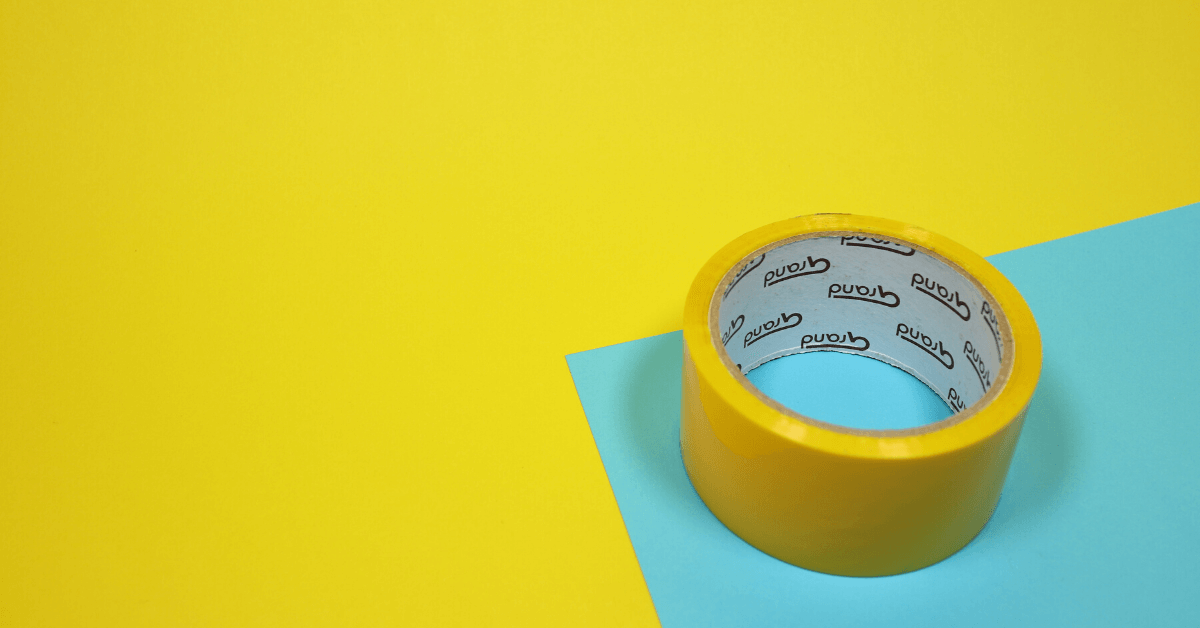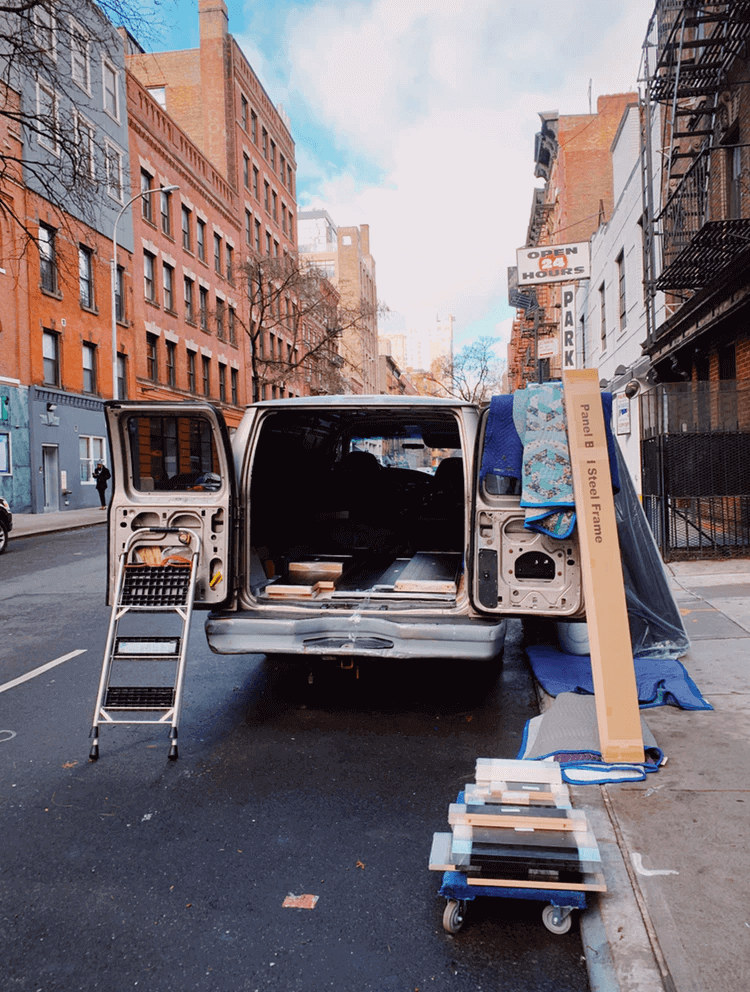Moving house can be one of the most exciting times in your life but it can also be stressful if you don’t plan for it. To make the move easier, use a reliable moving house storage service and then follow the steps listed to begin packing!
There are many steps you need to consider before, during and after the move.
One big thing to prepare for before you start packing your house is what materials you will need. This may seem simple, “I just need boxes and packing tape.”
That is not true. Those are very important things to have when you move house but there are many other items you might need as well.
Having the necessary materials can make your experience go from, “I’m never doing that again.” to “That wasn’t so bad.”
We have created this guide with packing supplies, the cost, where to buy them and examples of how to use them so you can have a stress-free move.
After we explain that, we continue on to offer practical tips on what to pay attention to and how to find a removal company.
Let’s get started so you can begin the process of packing up your items and getting into your new home!
1. Bubble Wrap
If you are looking to give your fragile items more cushioning, bubble wrap has consistently proven to be many people’s go-to when moving.
Bubble wrap is a specific packaging material in sheets that has small air cushions that are designed to protect your breakable items.
It’s common to wrap items such as glass so things don’t break during transit.
Not only is it fairly inexpensive, but you can also use it in different ways when you are moving from one location to another.
Wrap delicate items with bubble wrap to add a level of safety during the moving process.
You can also line the bottom and sides of your boxes to create a buffer between your items and the outside elements.
Also, keep in mind that bubble wrap is sold in different sized rolls which have different bubbles sizes for varying levels of protection.
The bubble sizes typically range from 1 to 2 cm in diameter.
How to use: The most common way to use bubble wrap is to cover fragile or awkwardly shaped items in your boxes and secure it with tape.
You should have the air bubbles facing your items, with the other smooth side facing outwards.
Here are the uses for the different bubble sizes:
- Small bubble wrap – most commonly used while moving. It provides surface protection from scratches, dents and chips. This is very good to use on small items like glass figurines or other breakables.
- Medium bubble wrap – used for surface protection but also helps with shock absorption. This can be used on larger, fragile items like mirrors.
- Large bubble wrap – often used as a filler material inside moving boxes to keep items from shifting during transit.
Average cost: £3.00 for 5m x 1m sections
Where to buy: STORED
2. Cardboard Boxes
Cardboard boxes are one of the most important things that you will need during your house move.
You will want to gather a variety of different sizes and make sure that they are in good condition.
- Reserve your smaller boxes for heavier items like books
- Larger boxes for light-weight objects like pillows/bedding.
While it’s more cost-effective to try and reuse moving boxes, you run the risk of your valuables being destroyed if the items are too heavy or the box can’t support it.
We recommend buying new boxes when you move to ensure there is structural integrity for all your belongings.
Author’s Note: Some moving companies (like STORED) have plastic boxes available to rent. These are sturdier than cardboard boxes and better for the environment because they can be used over and over.
In addition to your regular moving boxes, you might also want to consider speciality moving containers like wardrobe boxes and dish boxes for those specific pieces.
Like bubble wrap, there are several different types of cardboard boxes that can be used. Besides many different shapes, sizes and materials the boxes could be made from, they can also vary on the level of support they provide.
The most commonly used moving box is single-walled. These boxes are typically very sturdy and can be reinforced even further by lining the fold of the box with tape.
However, if you are in need of an even sturdier box, there are double-walled options available. These types of boxes have the strength to hold heavy objects and provide the protection your possessions require.
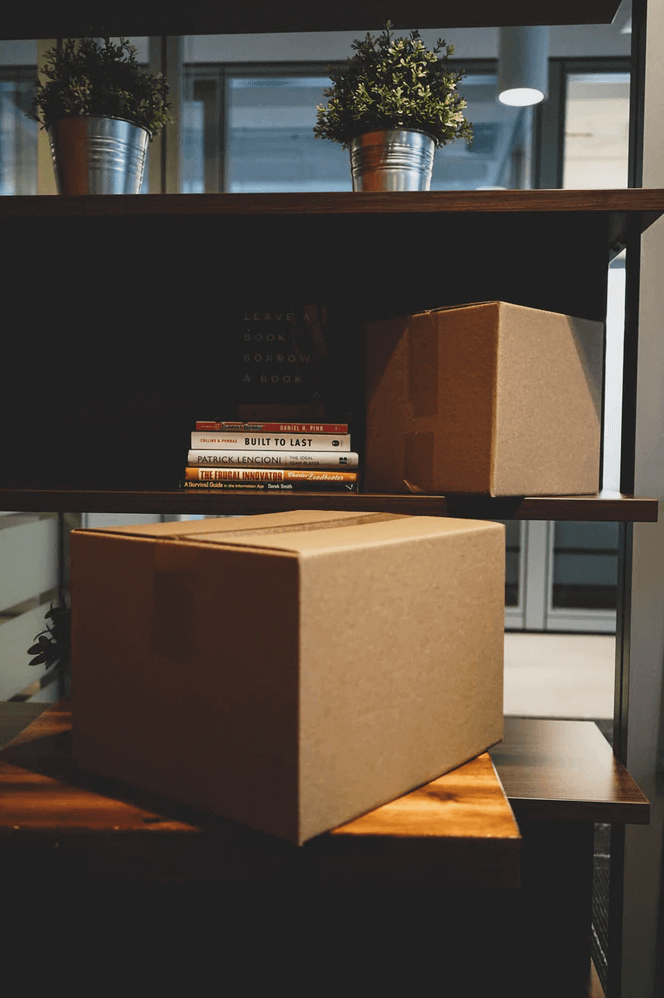
Photo by Brandable Box on Unsplash
How to use: Have dedicated boxes for the different rooms in your home, to make unpacking easier. Fill your box with your choice of packing material, seal with sturdy tape, and label them to make the unpacking process run smoothly.
You can also place small boxes inside of larger ones to keep smaller items from moving inside the box.
Average cost: £2.50 each for S/M boxes, £3.00 each for M/L boxes, £9 each for a garment box
Where to buy: STORED
3. Packing Tape
Most people are tempted to choose the cheapest option when selecting packing tape. However, we recommend spending a little more on quality heavy-duty tape.
The cheaper tape is usually thinner which is more prone to breaking and does not have the same sticking power as heavy-duty tape. This could be disastrous for your belongings if a box becomes untapped during transit.
Always stick to brands that you are familiar with, and go with the options that are extra duty to ensure everything stays in place during the move.
Also consider buying your packing tape in bulk to save cost overall, as you will end up needing more than you think you will.
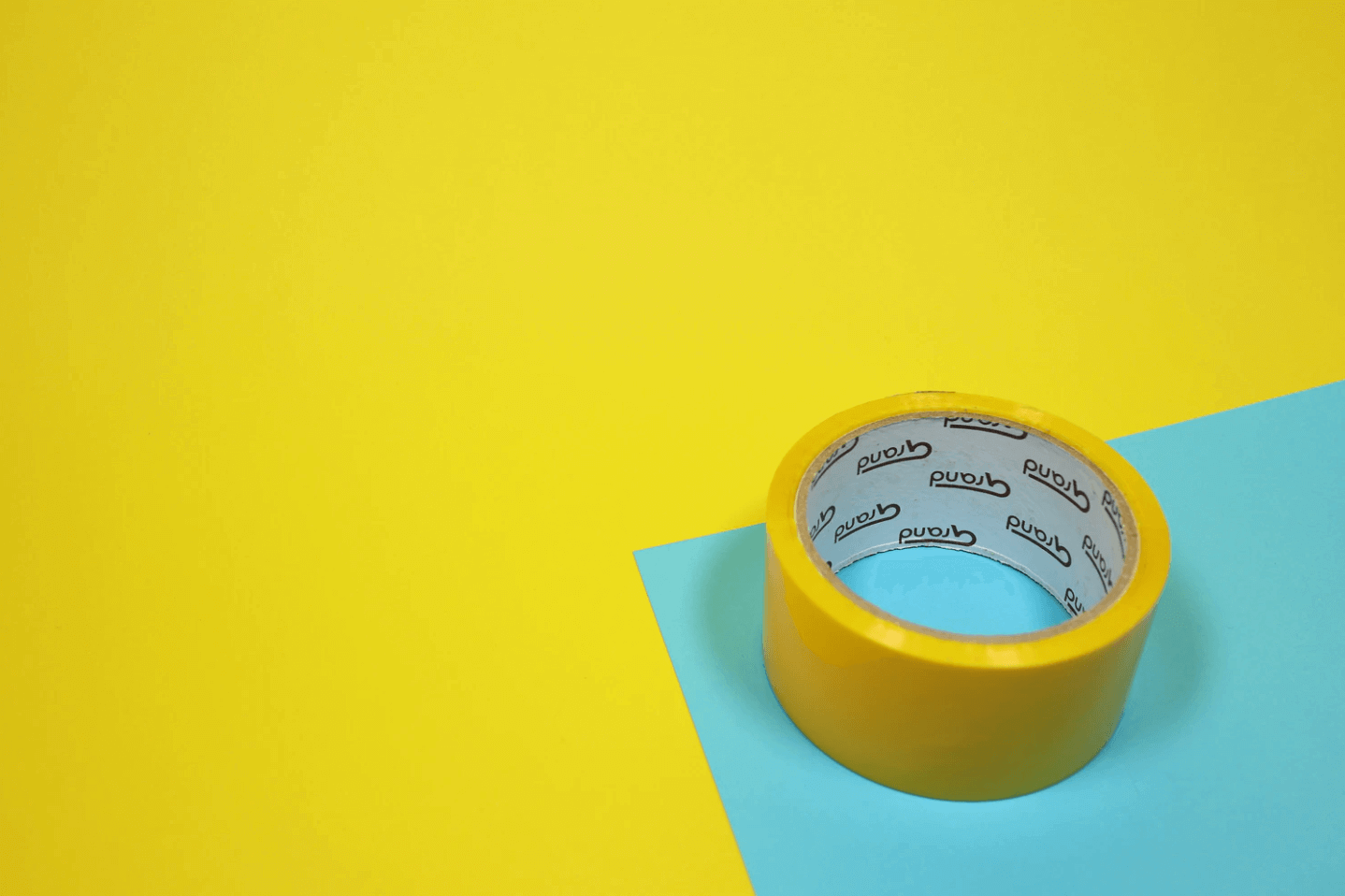
Photo by Lucas Dudek on Unsplash
How to use: Tape all seams and reinforce the bottom of boxes when you use your heavier items. To make things easier and faster, consider using a tape dispenser that can help you only use the amount you need per box.
Average cost: £1.50 for general, white tape, £2.50 for tape with fragile wording
Where to buy: STORED
4. Packing Labels
Label your boxes with as much information about the contents inside as you can.
You might think you’ll remember everything you put in each box until you’re at your new home and frantically looking for something specific.
Labelling your boxes will help keep you organized when you have boxes stacked in your home and when you are trying to unpack.
Author’s Note: If you want an alternative to packing labels, we also recommend having a good collection of permanent marker pens that you can use to label the boxes.
Different colour markers can act as a labelling system to designate which box goes in what room.
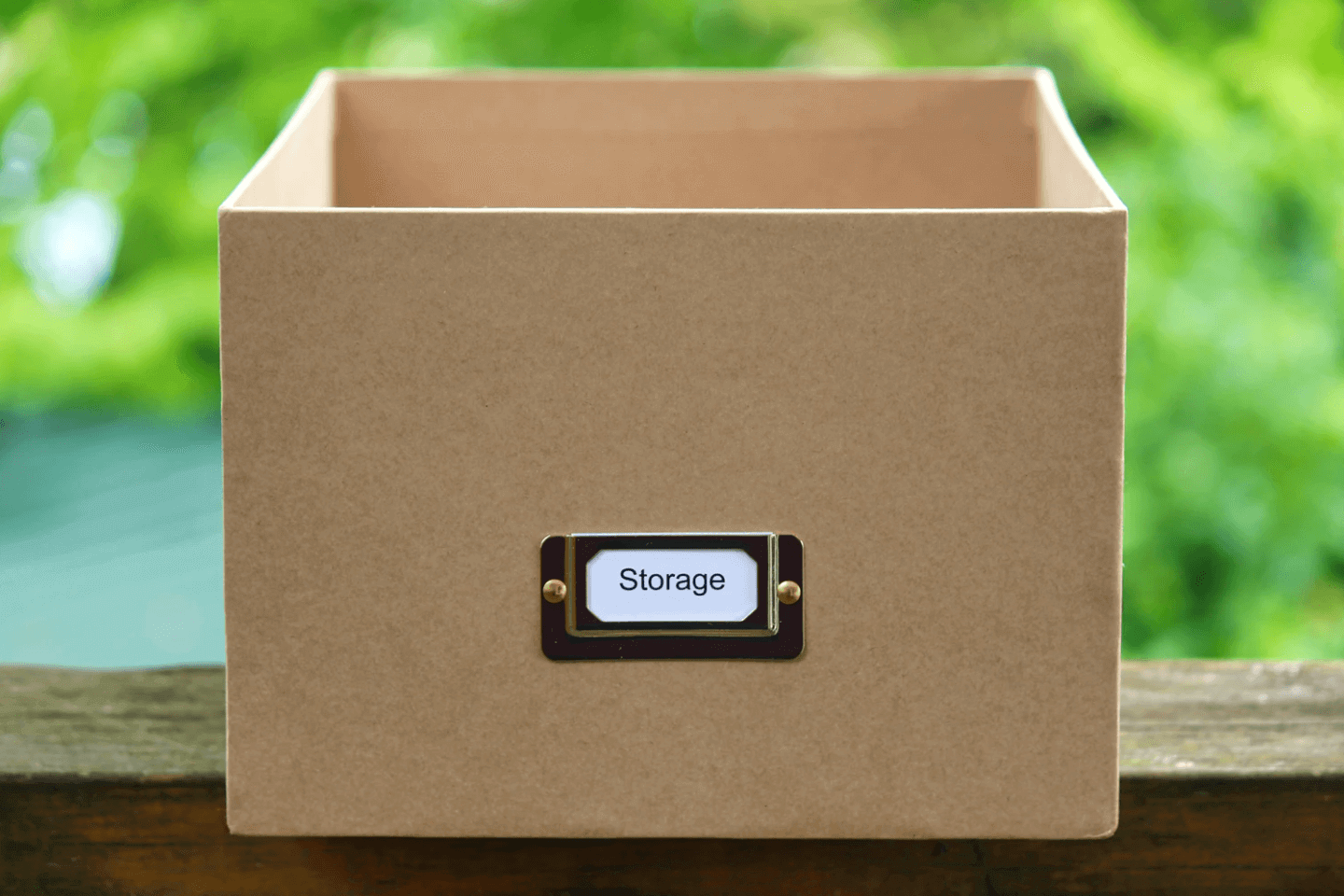
Photo by Lia Trevarthen on Unsplash
How to use: Whether you’re using a packing label from an office supply store, online, or one that’s included on the box; it’s pretty straightforward.
Simply list down the contents of the box and which room it belongs in.
If you have multiple boxes that you want to be able to keep track and know you have everything in your new home, number them 1/4 and repeatedly to ensure everything is accounted for.
Average cost: £6.95
Where to buy: pricestickers.co.uk
5. Moving Blankets
Removal companies will have specialized moving blankets. With this option you know you’re getting a thick blanket that can also be used inside the moving truck.
The softness of cotton will protect even the most delicate items and generally come in different sizes to fit all your different types of furniture.
However, any thick blanket that you own will be just as effective for larger household items.
Author’s Note: If you are using your own blankets, make sure to set them aside so they don’t accidentally get packed.
Instead of buffering your furniture with shrink wrap, wrapping paper, or packing paper, you can use moving blankets to add an extra layer of protection to the elements.
How to use: Cover your possessions with the moving blankets and ensure they are safeguarded during the move. You can even add an extra level of protection in the moving truck by laying out the blankets in between valuable items.
Average cost: £15
Where to buy: homebase.co.uk
6. Furniture Covers
If you are transporting furniture, it’s recommended to have pads or covers to protect them.
Most people remember to get a mattress cover but you can buy covers for couches and cloth chairs as well.
You can also find pads that will cover your dresser or wooden furniture to avoid gashes or scratches during the moving process.
Most furniture covers are made from a thin plastic material so that’s why we suggest coupling them with moving blankets as mentioned in the previous tip.
Author’s Note: You may be tempted to skip these thin covers but they are very valuable for preserving the warranty on your more expensive household items, like mattresses.
If you are looking for a thicker furniture cover that won’t require blankets as well, we suggest FurniGuard. It can be more expensive but it is durable, water-resistant and reusable, which makes it worth the investment.
How to use: Simply slide the cover over your mattress, couch cushions or other items and tape it closed to ensure it does not slip off.
If you are using moving blankets with the furniture covers, place the blankets over the item and then slip the plastic cover around it.
Average cost: £8
Where to buy: argos.co.uk
7. Straps or Rope
After you have your big items wrapped up, cargo straps and/or rope will help secure them in the moving truck or van. Unsecure items can shift around during the move, causing damage.
Make sure your straps are durable enough to keep heavy furniture secure without breaking.
How to use: Some straps have levers for easy tightening. If so, secure the straps around the item and connect it to the side of the moving vehicle or another item and then operate the lever until the strap is secure.
Be careful not to damage the furniture as you tighten the strap.
If you are using rope or straps without a lever, you can secure the straps by tying them after you place them around the furniture piece.
Average cost: £13
Where to buy: amazon.co.uk
8. Tool Set
Having a travel-sized toolset can sometimes come in handy on moving day. You never know when a hammer, scissors, screwdriver, or pliers might come in handy when moving furniture. Always be ready for the unexpected.
The moving process comes with a lot of assembly and disassembly and a toolset is always good to have just in case it’s needed.
You don’t want to find yourself trying to load a large piece of furniture and it gets stuck because it can’t fit through the front door.
Make sure this is either packed last or it’s a part of the essential kit that you have by your side and not packed away.

Photo by JESHOOTS.COM on Unsplash
How to use: How to use your toolset will vary depending on what type of furniture you have, the size of the space you are moving from and the size of your moving vehicle. The most popular use for a toolset while moving house is to disassemble larger pieces of furniture or disconnect items like washers and dryers.
Average cost: £20
Where to buy: argos.co.uk
9. Cleaning Supplies
Cleaning supplies won’t necessarily help you with packing boxes but it is good to have handy as your packing and loading things into your moving truck or van.
As you are packing things, you may want to wipe them down and you’ll definitely want to clean under and around furniture as you move it. This can be essential to getting your housing deposit back.
You most likely already have a broom but make sure it is available on moving day as well.
Trash bags are another great cleaning supply to have on hand. You will be surprised at how many trash bags you need while moving, even if you have decluttered your home before.
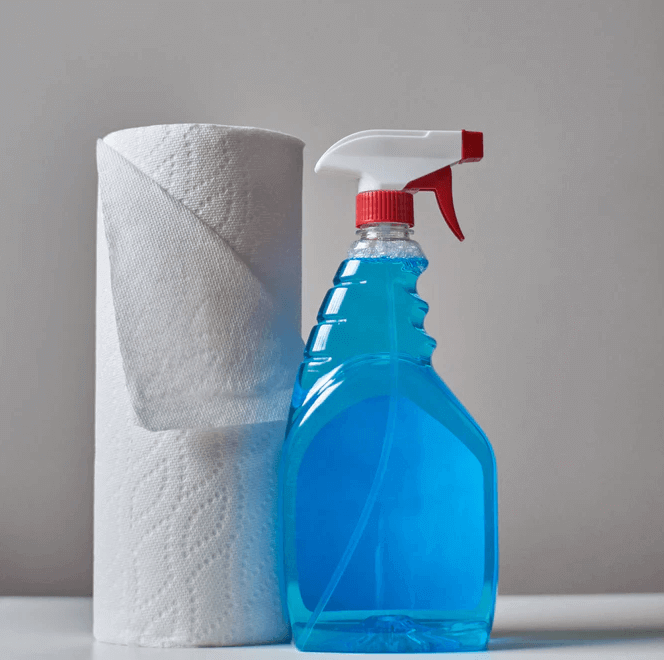
Photo by Crystal de Passillé-Chabot on Unsplash
How to use: Wipe down each item before you pack it. It is easier to wrap items in packing plastic if it is not covered in dust. The packing tape also doesn’t stick well to dusty items.
Use your broom to sweep out the moving vehicle and to sweep up any debris on the floor. Any debris, no matter how small, can cause damage to your floors or furniture as you move it out of the house.
Average cost: Price varies
Where to buy: Sainsburys (or many local shops)
10. Trash Bin
You most likely already have a trash bin inside your home but what about a larger one outside? Both of these are great to have while moving.
Your inside trash bin is typically smaller so it will fill up very fast, especially while moving. Some cities provide trash bins for their citizens but you normally need to look into that beforehand and it could be difficult to get one as you are moving.
If that’s the case, look into trash removal companies that provide larger containers for rent. Even if you only need it for one day, it’s better than having to make several trips in and out of your home to remove the trash plus the trips to dispose of the bags after that.
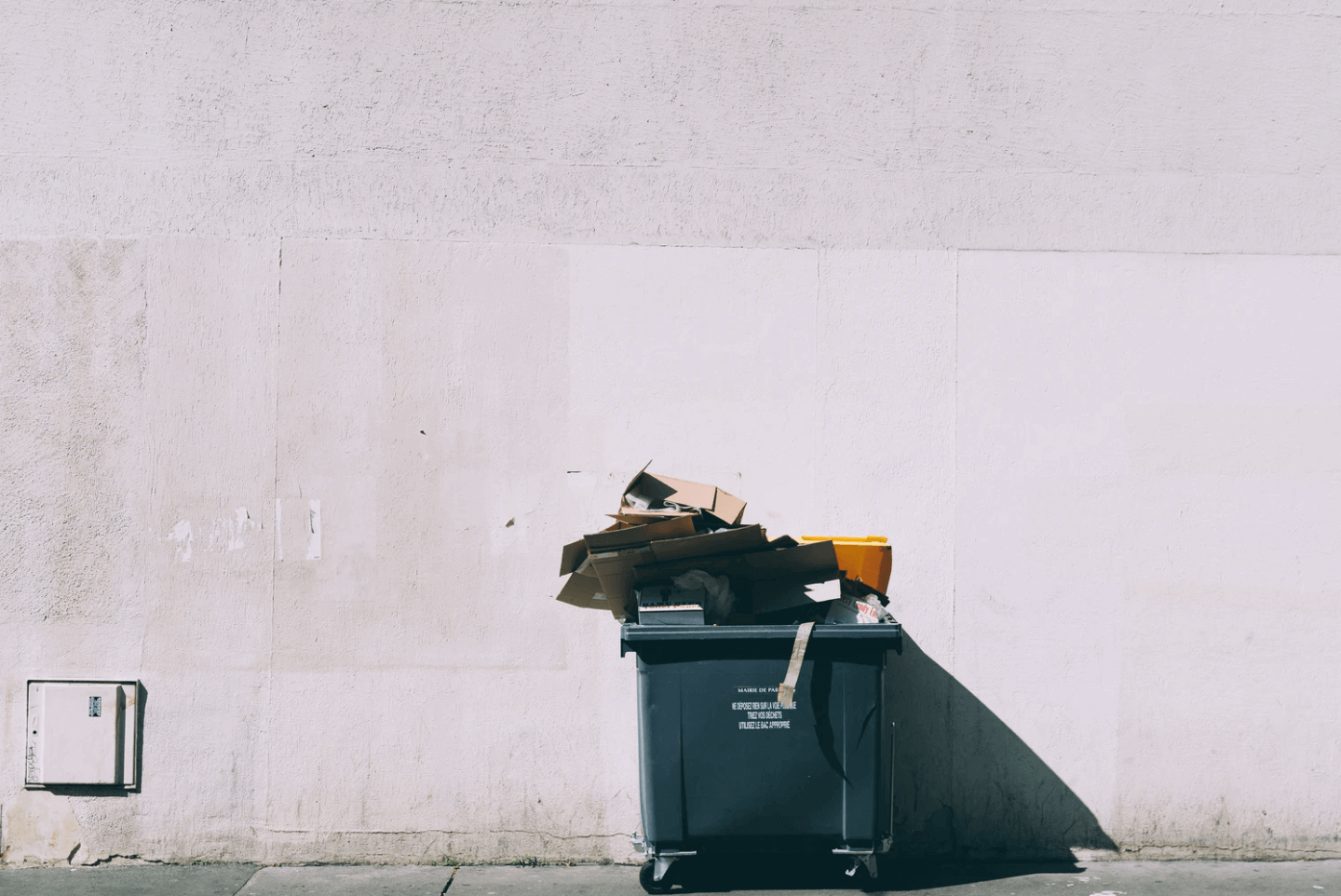
Photo by Jilbert Ebrahimi on Unsplash
How to use: Use your inside bin for smaller items and trash while you are packing up your house and the larger bin to dispose of anything that won’t fit inside. The larger bin can also be used to collect the bags from the inside trash.
The great thing about the inside trash bin is that once you are fully packed and your house is cleaned, you can place the cleaning items, tools, etc. inside the trash bin to take with you to your next home.
Average cost: £20 – £40 (depending on size)
Where to buy: B & Q
What to Pay Attention to
There are several things to pay attention to when packing for a move but the most important thing is to have a plan and stay organized.
After reading through this guide, make sure you have all of the packing material you will need before you pack a single box.
It is better to have slightly more materials than you will need instead of the alternative, realizing you need one more box or a few more strips of tape on moving day.
Create a dedicated space for all of your materials and place them back there when you are finished packing to avoid them getting lost in the clutter of moving.
After you have your materials organized, stay consistent in your packing strategy.
Wrap delicate items carefully, don’t pack items from different rooms in the same box and maintain your labelling system throughout the entire process.
This will help make packing much easier and will create an easy transition into your new home.
If you are looking for tips beyond packing material, check out our 75 moving tips for a smooth move.
Find a Removal Company
During the packing process, you will also want to think about how you are going to move your items. Are you going to complete this task yourself or hire a removal company?
A removals company will definitely ease your stress during moving day and save you the heavy-lifting but what should you look for in a removal company?
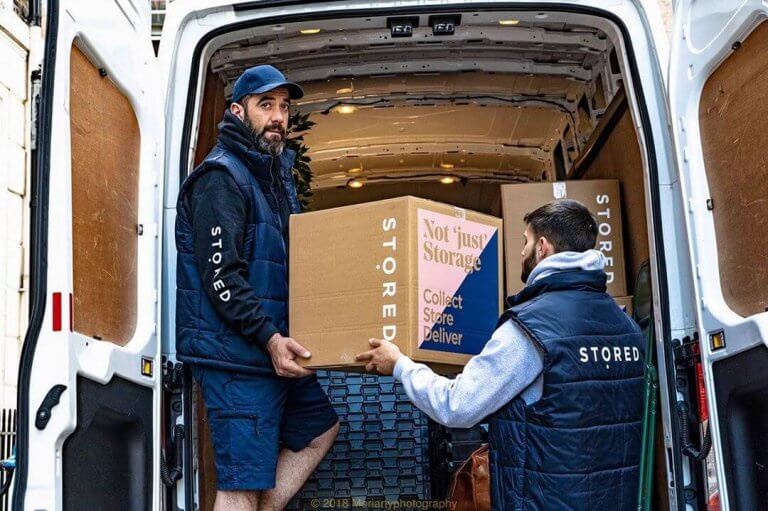
Here are questions to think about when considering which company to go with:
- Do they service the area you are moving to and from?
- What is included for the cost?
- Are they able to do pickup and same-day delivery?
- What is their policy on delays, complaints, etc.?
- Do they have good, recent reviews?
It’s very important to consider all of these things before committing to a removal company because they will be transporting the majority, if not all, of your most important possessions.
If you are looking for a removal service in London, STORED should be #1 on your list. We cover many London areas from Harringay to Earlsfield and everywhere in between.
Our service includes:
- 2 experience removal experts
- £500 standard liability
- High-quality service and support
- stackable 80-litre plastic moving crates (available to rent)
We even have two unit packs available that include packing materials to match the unit size you choose:
- 12sq ft – which includes 4 med boxes, 4 sm boxes, 1 x tape and 10m bubblewrap
- 15sq ft – which includes 5 med boxes, 5 sm boxes, 1 x tape and 10m bubblewrap
Our full price list will be available online soon!
Now It’s Your Turn
There are many different packing materials and different methods of organizing your items inside each box.
Hopefully using this list helps you feel prepared for moving day and it will be completed hassle-free.
Are there any other packing materials you can’t move without?
What about packing hacks? Do you have any uses for the materials we listed that weren’t mentioned?
Some additional resources you might be interested in:

